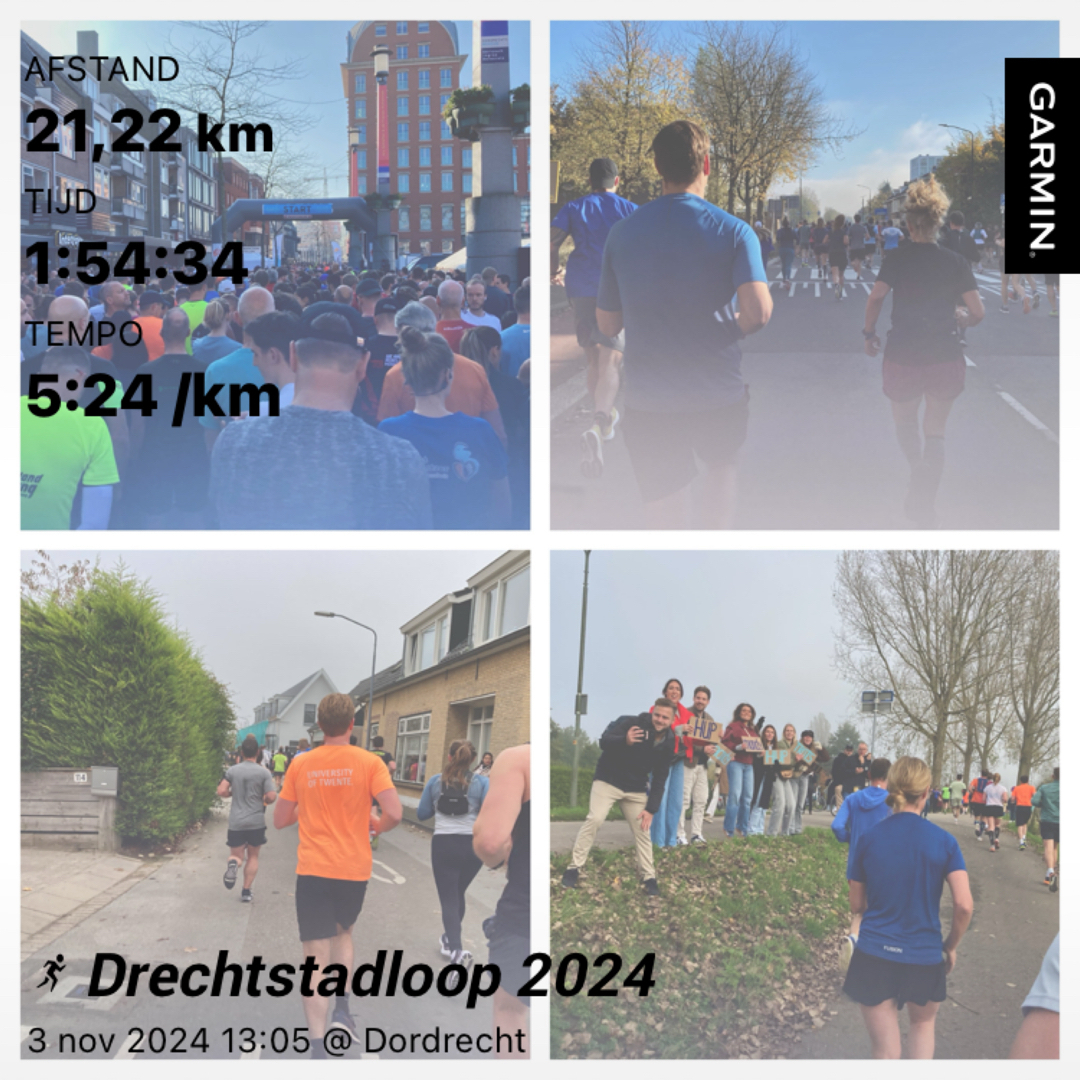As a test for my upcoming marathon I ran half the distance in Dordrecht, the Netherlands. The weather was perfect, and I appeared well-rested at the starting line. The first 600 m was a bit cramped with runners, so I couldn’t run fast enough for a sub-2 hours result. When I was finally able to, I sped up to compensate for the lost time. Until the 16 km mark my watch predicted 1h57m30s as the nett time. Then I sped up by 6 percent, forcing a faster pace. Of course, this wasn’t without consequences, and I started to cramp up, with the occasional spasm. Somehow I could keep the muscle cramps under control, and finished in 1h54m35s.
The distance was a problem, of course, but the running speed was, since I hadn’t trained for it. In fact, in the final 5 km I ran faster than my fastest 10 km this year. I clearly was overreaching here, which isn’t a problem, since it was a race, after all. Since this half marathon was a test, I can now evaluate that 4h15m would be a reasonable and rational time for me on the marathon distance. It leaves room for bad circumstances and a bad day. Previously, in 2021, bad weather caused me to run 5 minutes slower than under perfect conditions. In theory, I could run a (very unlikely) 4 hour marathon. I suppose I’ll leave that barrier for the next marathon.
Still to come next Sunday is a 35 km long slow run, with 10 km at marathon race pace, a 25 km long slow run the Sunday thereafter, and in three weeks my marathon race in Spijkenisse, the Netherlands, also on a Sunday. You see, there’s some reason to this madness.
